Exploring the Majestic Great Wall: A Journey Through the Beijing Section
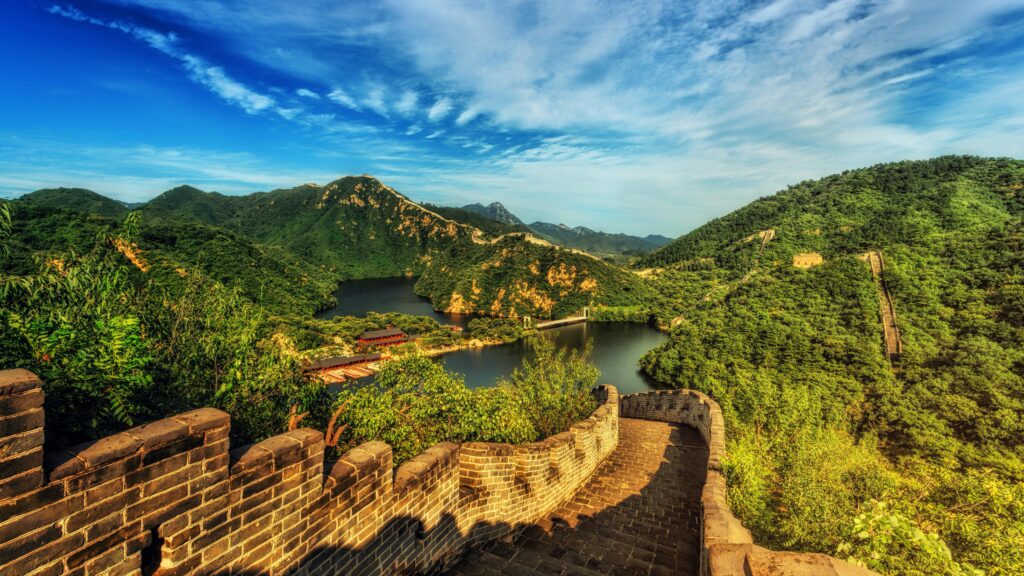
An Essential Guide to Visiting Great_Wall_Beijing_Section
Visiting the Great Wall of China is not just a hike; it’s a journey through time, a chance to walk in the footsteps of emperors and soldiers who once defended the realm against invasions. The Great Wall’s Beijing section, in particular, offers a captivating blend of stunning scenery, rich history, and a sense of adventure that beckons travelers from around the globe.
Imagine standing atop ancient stones, gazing out over rolling hills that stretch as far as the eye can see. Each turn of the wall reveals a new vista, a new story waiting to be uncovered. From the well-preserved sections of Mutianyu, ideal for families and casual hikers, to the rugged beauty of Jinshanling, which entices more adventurous souls, the Great Wall caters to a variety of tastes and abilities.
But beyond the breathtaking views and historical significance, visiting the Great Wall is an opportunity to experience the vibrant culture of Beijing. As you trek along the wall, you’ll find local vendors selling traditional snacks, offering a taste of authentic Chinese cuisine. Whether you’re savoring a warm baozi or trying your hand at bargaining for souvenirs, the experience is as much about the journey as it is about the destination.
This guide aims to equip you with essential tips and insights to help you make the most of your visit to the Great Wall’s Beijing section. From the best times to go and how to get there, to the hidden gems and must-see spots along the way, we’ll ensure that your adventure is nothing short of unforgettable. So lace up your hiking boots, grab your camera, and prepare for a remarkable experience that intertwines history, culture, and breathtaking landscapes!
In This Guide
- An Essential Guide to Visiting Great_Wall_Beijing_Section
- The Rich History and Legends of Great_Wall_Beijing_Section
- Main Highlights: What You Absolutely Can’t Miss
- Planning Your Visit: A Practical Guide
- Tickets: Prices, Booking, and Tips
- How to Get There: A Complete Transportation Guide
- Local Cuisine and Accommodation Nearby
- Frequently Asked Questions
- Final Thoughts on Your Trip
The Rich History and Legends of Great_Wall_Beijing_Section
The Great Wall of China, an iconic symbol of ancient engineering and determination, stretches over 13,000 miles, with several sections winding through the stunning landscapes of Beijing. Among these, the Beijing section stands out not only for its breathtaking views but also for its rich history and legends that have captivated visitors for centuries.
A Historical Overview
The history of the Great Wall dates back to the 7th century BC, during the Warring States period when various states built walls to protect their territories from invasions. However, the most notable constructions began during the Ming Dynasty (1368-1644), when the wall was extensively rebuilt and fortified as a defense against Mongol invasions. The Beijing section, primarily constructed between 1404 and 1420, showcases the ingenuity of Ming architects and their commitment to safeguarding the capital.
As you traverse the wall, particularly at popular sections such as Badaling, Mutianyu, and Jinshanling, you’ll witness impressive watchtowers, beacon towers, and parapets that were once manned by soldiers ready to defend against attacks. Each stone tells a story of bravery, strategy, and survival, underscoring the wall’s formidable presence in China’s historical narrative.
Legends and Myths
The Great Wall is steeped in legends that add an enchanting layer to its historical significance. One of the most poignant tales is that of Meng Jiangnv, a woman whose husband was conscripted to work on the wall. After hearing of his death due to the harsh working conditions, she traveled to the wall, weeping bitterly. Her sorrowful cries were said to have caused a section of the wall to collapse, revealing her husband’s remains. This story symbolizes loyalty and love, resonating deeply within Chinese culture.
Another popular legend surrounds the wall’s construction, suggesting that the spirits of those who died during its building haunt the structure. It is believed that these spirits protect the wall, adding to its mystique and significance.
Cultural Significance
The Great Wall is not merely a physical barrier; it represents the perseverance and strength of the Chinese people. UNESCO recognized its cultural importance, designating it as a World Heritage Site in 1987. Today, the wall attracts millions of tourists each year who come to walk its ancient stones, breathe in the history, and marvel at the stunning vistas that stretch across the mountains and valleys.
Every visit to the Beijing section of the Great Wall is an opportunity to connect with the past. As you hike along its paths, consider the countless lives that shaped this monumental feat of engineering. The tales of sacrifice, determination, and love that accompany the wall are reminders of the enduring human spirit.
Conclusion
The Great Wall of Beijing is a testament to China’s rich history and the legends that continue to echo through time. Whether you are standing atop its ancient stones or gazing at its grandeur from afar, the wall invites you to explore its stories, making your journey not just a hike but a profound experience steeped in the mystery and majesty of China’s past.
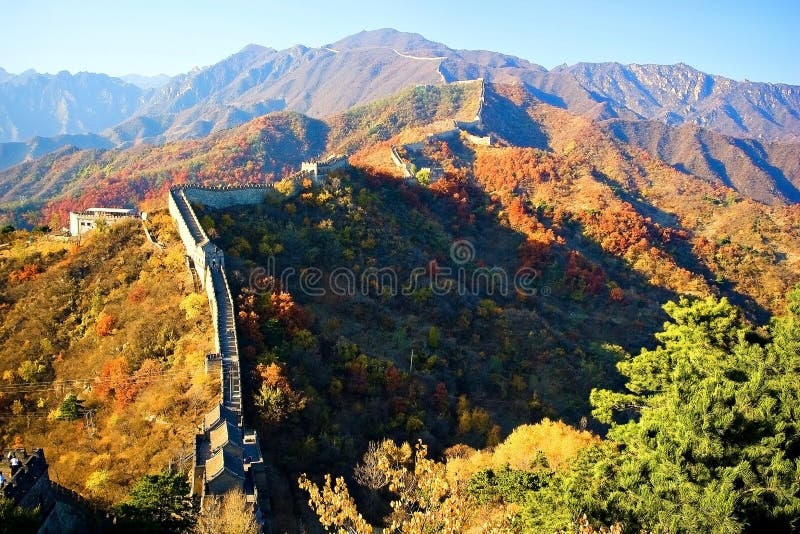
Great_Wall_Beijing_Section.
Main Highlights: What You Absolutely Can’t Miss
When visiting the Great Wall of China, particularly the Beijing sections, there are a few highlights that you absolutely cannot miss. Here’s a guide to ensure you experience the best of this iconic landmark:
1. Mutianyu Great Wall
Why Go?
Mutianyu is a less crowded section of the Great Wall, making it perfect for those looking to enjoy breathtaking views and a more peaceful hike. This well-preserved area features stunning watchtowers and lush green surroundings.
What to Do:
– Cable Car Ride: Take the cable car to the top for a scenic view, or hike up for a more adventurous experience.
– Explore Watchtowers: Don’t miss the opportunity to explore the ancient watchtowers that offer panoramic views of the valleys below.
– Photography: Capture stunning photographs, particularly during sunrise or sunset when the wall is bathed in golden light.
2. Jinshanling Great Wall
Why Go?
Jinshanling is known for its dramatic scenery and is less commercialized than other sections. The wall here features a mix of restored and original sections, providing a unique glimpse into its history.
What to Do:
– Hiking Adventure: Hike from Jinshanling to Simatai for a challenging yet rewarding trek that spans approximately 10 kilometers. The views are simply breathtaking!
– Photography Opportunities: The rugged terrain and watchtowers make this a prime spot for photography enthusiasts.
– Cultural Experience: Engage with local vendors who sell traditional snacks and souvenirs along the trail.
3. Badaling Great Wall
Why Go?
As the most famous and accessible section, Badaling is ideal for those who want to experience the Great Wall without venturing too far from the city. It’s perfect for first-time visitors.
What to Do:
– Visitor Center: Start at the visitor center to learn about the history and significance of the Great Wall.
– Cultural Exhibits: Check out the exhibits that showcase the wall’s construction and cultural importance.
– Souvenir Shopping: Explore the nearby shops for souvenirs and local snacks.
4. Simatai Great Wall
Why Go?
Simatai is renowned for its steep sections and breathtaking views, making it a favorite among adventurers and experienced hikers. This section remains largely untouched and offers an authentic experience.
What to Do:
– Night Tours: Experience the wall beautifully lit at night, a unique opportunity that few other sections offer.
– Challenging Hiking: Take on the steep climbs and enjoy the thrill of hiking along less-traveled paths.
– Photography: Capture stunning sunset views with minimal crowds.
5. Scenic Views from Jingshan Park
Why Go?
Located near the Forbidden City, Jingshan Park offers a fantastic vantage point to view the Great Wall snaking over the hills in the distance.
What to Do:
– Climb the Hill: Ascend to the top of the hill for a panoramic view of the Forbidden City and the Great Wall in the background.
– Picnic Spot: Enjoy a relaxing picnic in the park surrounded by beautiful gardens and historical architecture.
Tips for Visiting
- Best Time to Visit: Plan your visit during spring (March to May) or autumn (September to November) for mild weather and beautiful scenery.
- Dress Appropriately: Wear sturdy shoes and dress in layers, as temperatures can vary greatly.
- Stay Hydrated: Bring plenty of water, especially if you plan to hike longer sections.
Exploring the Great Wall of China is not just about the breathtaking views; it’s also about immersing yourself in the history and culture of this ancient wonder. With these highlights, you’ll create unforgettable memories that will last a lifetime!
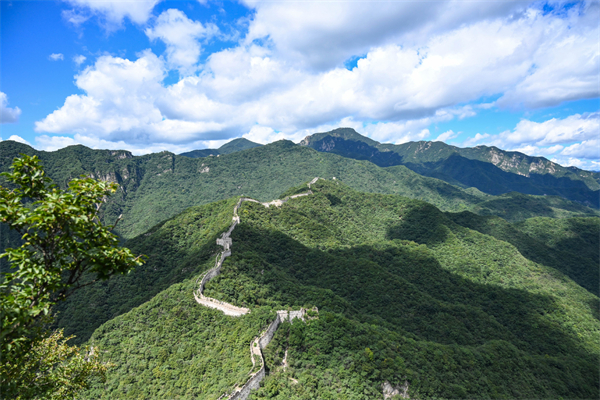
Great_Wall_Beijing_Section.
Planning Your Visit: A Practical Guide
Planning Your Visit: A Practical Guide
Visiting the Great Wall of China, particularly the sections near Beijing, is an unforgettable experience that blends history, natural beauty, and adventure. To make the most of your trip, here’s a practical guide covering essential details—from when to visit and how to get there to what to bring along.
Best Times to Visit
Spring (March to May)
Spring is one of the most pleasant times to visit the Great Wall. With temperatures ranging from 10°C to 25°C (50°F to 77°F), the weather is comfortable for hiking. The blooming flowers and budding trees also create a picturesque backdrop along the Wall.
Summer (June to August)
Summer can be hot, with temperatures soaring above 30°C (86°F). However, early mornings or late afternoons are ideal for hiking, as the sun will be less intense. Just be prepared for occasional rain showers and don’t forget sunscreen!
Autumn (September to November)
Autumn is another excellent time to visit. With mild temperatures and stunning fall foliage, the Wall becomes a canvas of red and gold. Expect cooler weather (15°C to 20°C or 59°F to 68°F), perfect for comfortable exploration.
Winter (December to February)
If you don’t mind the cold, winter offers a unique experience. The Wall can be a magical, snow-covered wonderland. Just be sure to bundle up, as temperatures can drop below freezing.
Getting There
The Great Wall is easily accessible from Beijing, with several popular sections to choose from:
-
Badaling: The most visited section, about 70 kilometers from downtown Beijing. It is well-connected by public transport, including buses and the subway.
-
Mutianyu: A less crowded alternative, located around 70 kilometers from the city. It offers stunning views and a cable car for those who prefer not to hike.
-
Jinshanling: For a more adventurous experience, this section is about 130 kilometers from Beijing and features beautifully restored and wild areas. It’s perfect for hiking enthusiasts.
-
Simatai: Close to Jinshanling, this section is known for its dramatic scenery and night hiking options.
Transportation Tips:
– Public Transport: Buses from central Beijing (such as the Dongzhimen bus station) go directly to popular sections of the Wall.
– Private Tours: Consider booking a guided tour for convenience, especially if you want to combine your visit with other attractions.
– Self-Drive: Renting a car can give you more flexibility, but be sure to check the road conditions and traffic rules.
What to Bring
- Comfortable Footwear: Sturdy hiking shoes are a must! The terrain can be uneven and steep.
- Water and Snacks: Stay hydrated and energized with plenty of water and light snacks, especially if you plan on hiking for several hours.
- Camera: Don’t forget your camera or smartphone to capture the breathtaking views and moments along the way.
- Weather Gear: Depending on the season, pack a hat, sunscreen, or a raincoat. In winter, bring warm clothing and gloves.
- Cash: While many places accept cards, having some cash (CNY) is handy for local vendors or small shops.
Local Etiquette
- Politeness is Key: A simple “ni hao” (hello) and “xie xie” (thank you) can go a long way in connecting with locals.
- Respect the Site: The Great Wall is a UNESCO World Heritage Site. Be mindful of your surroundings and avoid littering.
- Stay on Designated Paths: For your safety and the preservation of the Wall, stick to marked trails and designated areas.
Nearby Attractions
Consider extending your visit to explore more of Beijing’s rich history and culture:
- Ming Tombs: A short drive from the Great Wall, these tombs are the final resting place of Ming dynasty emperors.
- Summer Palace: A beautiful imperial garden showcasing traditional Chinese architecture and serene landscapes.
- Beijing’s Hutongs: After your hike, explore the charming alleyways of old Beijing, filled with shops, cafes, and local culture.
Conclusion
A visit to the Great Wall of Beijing is sure to be a highlight of your trip. With its breathtaking views and rich history, planning ahead will ensure a smooth and memorable experience. Whether you’re hiking, taking photos, or simply soaking in the atmosphere, the Great Wall awaits your discovery!
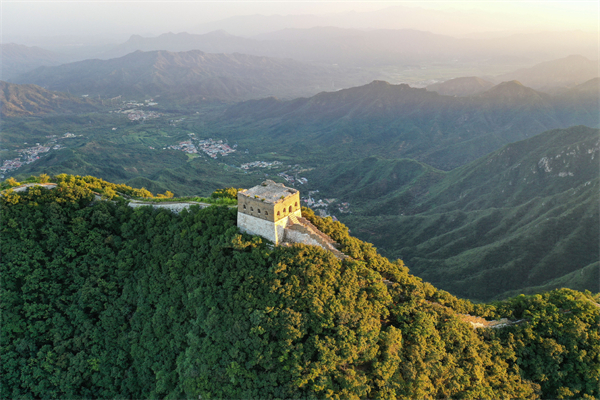
Great_Wall_Beijing_Section.
Tickets: Prices, Booking, and Tips
When planning your visit to the Great Wall of Beijing, understanding ticket prices, booking options, and insider tips can enhance your experience significantly. Here’s what you need to know to ensure a smooth adventure at one of the world’s most iconic landmarks.
Ticket Prices
The entry fees for various sections of the Great Wall can vary, typically ranging from 40 to 100 CNY (approximately $6 to $15 USD) per person. Here’s a quick breakdown of popular sections:
- Mutianyu: 45 CNY (about $7 USD) for entry. The cable car is an additional 100 CNY (round trip).
- Jinshanling: 65 CNY (around $10 USD) for entry.
- Badaling: 40 CNY (about $6 USD) for entry, but it tends to be more crowded due to its proximity to Beijing.
Prices may fluctuate during peak seasons or special events, so it’s wise to check the latest information before your visit.
Booking Tickets
Booking your tickets can be done in a few convenient ways:
-
Online: Most sections of the Great Wall offer online ticket sales through official websites or trusted travel platforms. This is a great way to secure your spot and avoid long lines at the entrance, especially during peak tourist seasons.
-
On-site: If you prefer spontaneity, you can purchase tickets directly at the entrance. However, be prepared for potentially long wait times, especially at the more popular sections like Badaling.
-
Guided Tours: Consider joining a guided tour, which often includes transportation from Beijing, entrance fees, and sometimes even meals. This option can provide valuable insights and save you the hassle of navigating the area on your own.
Tips for Visiting
-
Timing: Arrive early in the morning or later in the afternoon to avoid the crowds and enjoy a more peaceful experience. The early morning light offers stunning photography opportunities, while late afternoon provides a magical golden hour.
-
Dress Comfortably: Wear sturdy shoes and dress in layers, as temperatures can fluctuate throughout the day. Don’t forget sunscreen and a hat, especially during the summer months.
-
Bring Water and Snacks: While there are vendors at some sections, it’s always a good idea to carry your own water and snacks, especially for longer hikes.
-
Plan Your Route: Each section of the Great Wall offers different experiences. If you’re looking for stunning views and fewer tourists, consider hiking the Jinshanling or Mutianyu sections. Badaling, while popular, is often crowded and less serene.
-
Stay Hydrated and Take Breaks: The hikes can be steep and demanding. Take your time to enjoy the views and rest as needed.
By keeping these ticketing details and tips in mind, your visit to the Great Wall of Beijing will surely be a memorable part of your adventure in this historic city. Whether you’re hiking the rugged paths or marveling at the breathtaking vistas, the Great Wall promises an experience like no other!
How to Get There: A Complete Transportation Guide
When planning your visit to the Great Wall in the Beijing Section, getting there is easier than you might think! Here’s a comprehensive transportation guide to help you navigate your way to one of the world’s most remarkable landmarks.
Getting to the Great Wall from Beijing
Public Transportation
- Subway and Bus:
- To Mutianyu:
- Take Line 2 of the Beijing Subway to Dongzhimen Station. From there, transfer to Bus 867 (the direct bus to Mutianyu). The bus ride takes about 1.5 hours.
-
To Jinshanling:
- Start at Dongzhimen Station and take Line 2 to Guangqumen Outer Street Station. Transfer to Bus 980 to Luanping, then switch to a local bus or taxi to reach the Jinshanling entrance. This journey can take around 2.5 to 3 hours.
-
Direct Tourist Buses:
- Various tour operators offer direct buses to sections of the Great Wall like Mutianyu and Jinshanling. These buses generally leave from popular tourist areas such as Wangfujing or the Beijing Railway Station. Check online or at your hotel for schedules and booking options.
Private Transportation
- Taxi:
-
Taxis are a convenient option for those looking to travel directly to the Great Wall. Ensure to have the name of your destination written in Chinese to show the driver. A taxi ride to Mutianyu will take approximately 1-1.5 hours, while Jinshanling may take about 2-2.5 hours, depending on traffic.
-
Ride-Sharing Apps:
-
Apps like Didi Chuxing are widely used and can be a great alternative to traditional taxis. Simply input your destination, and you can arrange a ride at your convenience.
-
Car Rentals:
- For those who prefer driving, renting a car is an option. Several rental companies operate in Beijing, but be prepared for heavy traffic and the complexities of driving in a foreign country. GPS navigation is highly recommended.
Guided Tours
- If you prefer a hassle-free experience, consider booking a guided tour. Many tours include transportation from your hotel, entrance fees, and a local guide to enhance your experience. These tours vary in price and duration, so look for one that fits your schedule and interests.
Tips for Your Journey
- Timing: Aim to leave early in the morning to avoid crowds and make the most of your day. The Great Wall can get quite busy, especially during weekends and holidays.
- Weather Considerations: Check the weather forecast before you go. The Great Wall can be more enjoyable in mild conditions, so plan accordingly.
- Pack Essentials: Bring water, snacks, sunscreen, and comfortable walking shoes. The hike can be demanding, so it’s best to be prepared.
Conclusion
With a variety of transportation options available, reaching the Great Wall from Beijing is both accessible and enjoyable. Whether you choose to travel by public transport, taxi, or on a guided tour, you’re in for an unforgettable adventure as you explore this iconic symbol of China’s rich history. Happy travels!
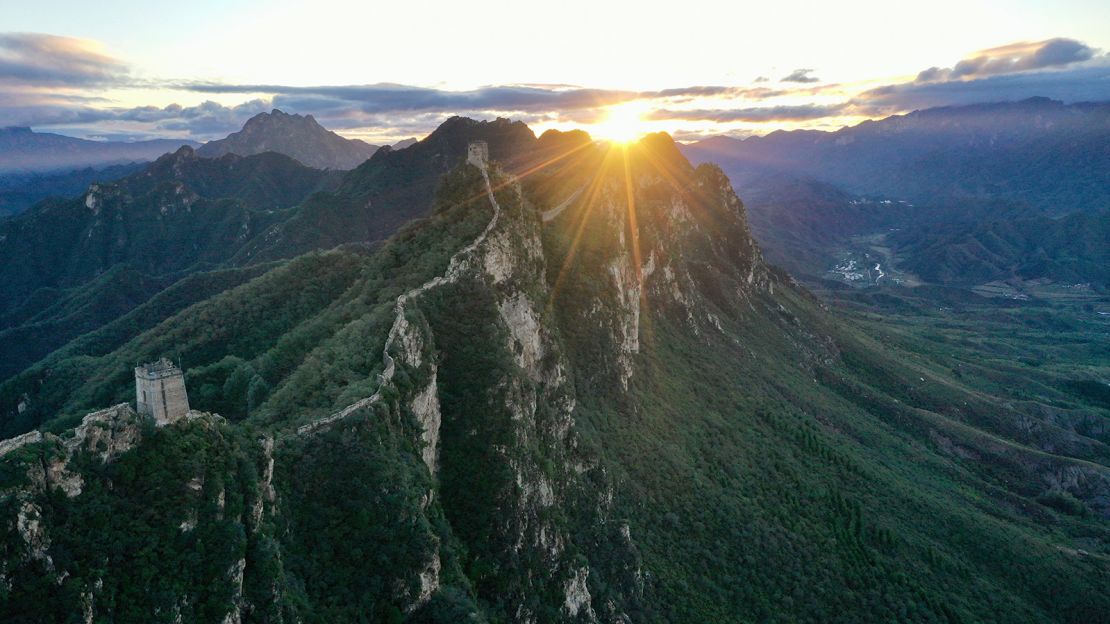
Great_Wall_Beijing_Section.
Local Cuisine and Accommodation Nearby
When visiting the Great Wall in Beijing, you’ll want to indulge in the local cuisine and find comfortable accommodation nearby to enhance your experience. The surrounding area offers a delightful mix of traditional flavors and cozy places to stay, making your adventure even more memorable.
Culinary Delights
Peking Duck
No trip to Beijing is complete without savoring its iconic Peking Duck. For an unforgettable experience, head to Da Dong Roast Duck or Quanjude. Both restaurants are renowned for their expertly roasted ducks served with crispy skin and sweet bean sauce. Make sure to arrive early, as these spots can get busy!
Hot Pot
For a warm and social dining experience, try a traditional hot pot. Yuanmingyuan Hot Pot is a great local favorite where you can enjoy a variety of meats and fresh vegetables cooked right at your table. Pair it with aromatic dipping sauces for a truly immersive meal.
Street Food
Explore the vibrant street food scene near the Great Wall. Vendors often sell grilled meat skewers, candied hawthorn, and zhajiangmian (noodles with bean paste). These quick bites are perfect for fueling up before your hike or as a reward afterward.
Local Snacks
Don’t miss trying Miancha, a warm millet soup, or Luzhu, a pork stew, which are both hearty and comforting. You can find these dishes at small local eateries around the wall.
Places to Stay
The Brickyard Retreat
Located near the Mutianyu section of the Great Wall, this eco-friendly boutique hotel offers stunning views and a serene atmosphere. With its rustic charm and modern amenities, it’s perfect for those looking to relax after a day of hiking. Prices range from $150 to $250 per night, making it a great mid-range option.
Great Wall Hotel Beijing
For a more luxurious stay, consider the Great Wall Hotel Beijing. This upscale establishment features elegant rooms, a fitness center, and fine dining options, all just a short drive from the wall. Expect to pay around $200 to $400 per night for this comfortable experience.
Hostel Options
If you’re traveling on a budget, Happy Valley Hostel is a charming choice for backpackers. Located in a traditional courtyard home, it provides a cozy atmosphere and friendly staff. Dormitory beds start at about $15 per night, making it an affordable option for solo travelers or groups.
Final Thoughts
Whether you’re hiking along the majestic Great Wall or enjoying the rich flavors of Beijing’s cuisine, you’ll find that this area offers an enticing blend of experiences. With incredible food and a range of accommodations, you can easily create lasting memories in this historic region. Enjoy your culinary adventures and restful nights as you explore one of the world’s most iconic landmarks!
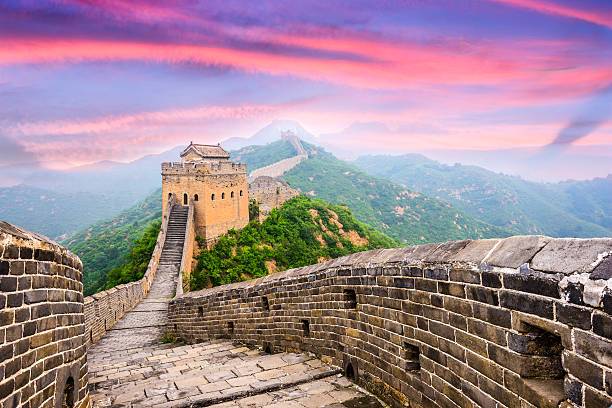
Great_Wall_Beijing_Section.
Frequently Asked Questions
Frequently Asked Questions for Your Visit to the Great Wall (Beijing Section)
1. What is the best time to visit the Great Wall in Beijing?
The ideal times to visit are during spring (March to May) and autumn (September to November). The weather is mild, making it perfect for hiking. In autumn, you can also enjoy the stunning foliage, adding to the beauty of the Wall.
2. Which section of the Great Wall should I visit?
Popular sections include Mutianyu, known for its stunning views and restored pathways, and Jinshanling, which offers a more rugged experience with fewer crowds. Each section has its unique charm, so choose based on your hiking preferences!
3. How do I get to the Great Wall from central Beijing?
You can reach the Great Wall by public transportation or guided tours. Buses to popular sections like Mutianyu are available from various locations in the city, or you can take a taxi or hire a private driver for convenience.
4. Is it possible to hike the Great Wall independently?
Absolutely! Many sections of the Great Wall can be explored independently, but be sure to wear comfortable shoes and bring water. Some less-frequented areas may have fewer signs, so a map or GPS can be helpful.
5. How long does it take to hike the Great Wall?
Hiking times vary by section and your fitness level. For example, a hike at Mutianyu can range from 2 to 4 hours, while more rugged trails like Jinshanling might take 3 to 5 hours. Plan accordingly based on your desired experience!
6. Are there facilities available at the Great Wall?
Yes, most popular sections like Mutianyu and Jinshanling have visitor centers, restrooms, and food stalls. However, be prepared for limited amenities at more remote areas, so it’s wise to carry snacks and water.
7. Can I visit the Great Wall during winter?
Yes! Visiting in winter offers a unique experience, with fewer tourists and a chance to see the Wall covered in snow. Just be sure to dress warmly and check conditions, as some areas may be icy.
8. What should I wear for a hike on the Great Wall?
Comfortable, sturdy footwear is essential, as the terrain can be uneven. Dress in layers to adapt to changing temperatures, and don’t forget sunscreen and a hat for protection against the sun, especially during warmer months!
Final Thoughts on Your Trip
As your adventure along the Great Wall of Beijing comes to a close, take a moment to reflect on the breathtaking landscapes, rich history, and unforgettable experiences that have defined your journey. Whether you’ve hiked the rugged paths of Jinshanling or marveled at the restored beauty of Mutianyu, each step along this ancient wonder is a reminder of the resilience and ingenuity of those who built it.
Beijing is more than just the Great Wall; it’s a vibrant tapestry of culture, history, and modernity waiting to be explored. From the imperial grandeur of the Forbidden City to the charming hutongs filled with local flavors, every corner of the city tells a story that adds depth to your travels.
As you prepare to leave, consider the connections you’ve made, the delicious Peking duck you’ve savored, and the warm greetings exchanged with locals. These moments will linger long after your trip ends.
So, pack your memories and a piece of the Great Wall in your heart. Until next time, happy travels!